Chronic otitis media with effusion is the leading cause of conductive hearing loss in children and may hamper early speech and language development. There has been great progress made toward clarifying the molecular basis of the pathogenesis of otitis media and developing new therapeutic ways to combat this disease. Recently, researchers have uncovered the pathological processes underlying this disease, and for the first time shown that proteins produced by cells of the middle ear do kill otitis media pathogens.
Most parents would not be surprised to hear that acute otitis media (middle ear infection) is the most common disease of young children, second only to the common cold. Middle ear infections are often recurrent, and some children develop chronic otitis media with effusion (OME), a condition that results in the accumulation of fluid (mucus) in the middle ear cavity.
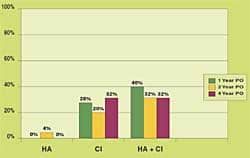
Fig. 1. Signal transduction pathways in otitis media.
If not treated during the critical period of a child’s development, this condition may result in hearing impairment that can affect speech and language acquisition. Middle ear infections account for 31 million visits to the doctor each year and are cited as the most frequent reason for taking children to the emergency room. It is estimated that, in the United States, the annual health care costs for middle ear infections exceed $5 billion. Fortunately, the incidence of middle ear infections decreases with age, and it is rare to have an ear infection after age eight.
Viral infections of the upper respiratory tract and allergic responses may interfere with the functioning of the eustachian tube, allowing bacteria access to the middle ear cavity, which is sterile under normal conditions. Acute otitis media usually occurs in one ear at a time and is characterized by inflammation of the middle ear lining. It may be accompanied by fever, sharp ear pain and the accumulation of fluid in the middle ear cavity. The protraction of the inflammatory process in the middle ear can lead to the development of chronic otitis media with effusion. The accumulation of fluid in the middle ear cavity can hinder the movement of the eardrum. Consequently, the transmission of sound to the hearing organ is reduced, causing conductive hearing loss.
The dramatic increase in cases of chronic otitis media occurred after the introduction of antibiotics, which is still the most common treatment for acute otitis media. An alternative treatment for chronic otitis media with effusion is the placement of a tube in the eardrum to drain the fluid. Ventilation tubes are only inserted after there has been a history of chronic ear infections. In this minor operation, which is performed under general anesthetic, a small incision is made in the child’s eardrum. A tiny plastic tube is put into the incision to drain the fluid from the middle ear. Approximately 3 million such procedures are performed annually in the U.S.
Wide and indiscriminate use of antibiotics has resulted in the alarming rise of antibiotic resistance worldwide among bacterial pathogens, necessitating the search for new methods of treatment for otitis media. Scientists and physicians at the House Ear Institute (HEI) and House Ear Clinic are working with Children’s Hospital of Los Angeles to enhance understanding about otitis media and to find ways of reducing the severity of this disease. Towards this goal, the molecular basis of the pathogenesis of otitis media is being sought, with the hope that the research will lead to the discovery of novel methods of treatment to complement and/or replace the antibiotics currently being prescribed.
An HEI research team led by co-author Jian-Dong Li, MD, PhD, in the Section on Signal Transduction is studying the sequence of events that is set into motion as a result of the binding of bacteria to cells of the middle ear.1 The work of these researchers has identified the cell signaling pathways through which bacteria cause inflammation and mucus overproduction in the middle ear, and thus lead to the development of conductive hearing loss. It is hoped that the elucidation of these pathways will help in the identification of novel therapeutic targets for the treatment of otitis media.
Signal Transduction Pathways in Otitis Media
Inflammation and mucus overproduction are hallmarks of chronic middle ear infection, but the cause of these problems remains unclear. The researchers at HEI have hypothesized that inflammation and mucus overproduction are caused by bacteria through specific signal transduction pathways.
Multiple approaches have been used to test this hypothesis over the past few years. In a recent report published in the July 2001 issue of Proceedings of the National Academy of Sciences2, Li and his research team provided clear evidence that bacteria induce the inflammation by activating a key signaling protein, called p38 MAP kinase (Fig. 1). Further, it was found that bacteria also stimulate mucus overproduction through activation of the same signaling protein. These studies open up novel therapeutic targets for the treatment of middle ear infection.
The authors, working with Drs. Cha and Lee, and scientists in HEI’s Section on Pathogenesis of Ear Diseases, are focusing on determining the role of the body’s innate immune system in protecting the middle ear from bacterial infections. The research has demonstrated, for the first time, that proteins produced by cells of the middle ear do kill otitis media pathogens. The work, which is summarized below, promises to open up new avenues of research for the development of more effective antibiotics.
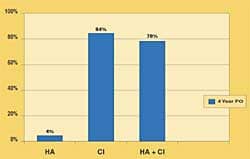
|
Fig. 2. The bacterium nontypeable Haemophilus influenzae (NTHi) bacteria, one of the main otitis media pathogens. |
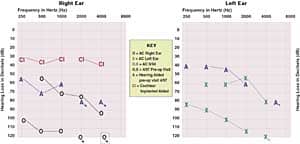
|
Fig. 3. The bacterium Moraxella catarrhalis (M. cat), another of the three main otitis media pathogens. |
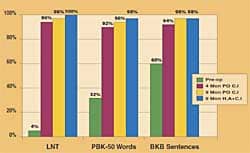
|
Fig. 4. The bacterium Streptococcus Pneumonia (S. pneumo) is responsible for the largest number of otitis media cases. |
Antimicrobial Peptides and Proteins that Fight Otitis Media
It is now believed that, in addition to the components of the adaptive immune system, the health of the nasopharyngeal tract, eustachian tube and the middle ear is also maintained by epithelial anti-microbial proteins and peptides that function to defend these tissues against microbial invasion. The larger antimicrobial proteins are often lytic enzymes (enzymes that disrupt the cell walls of bacteria), nutrient-binding proteins or proteins containing sites that target specific microbial macromolecules. The smaller antimicrobial peptides (defined as peptides containing fewer than 100 amino acids) act, at least in part, by disrupting the structure or function of microbial cell membranes.
Included in the molecules of the innate immune system are the defensins, lysozyme, lactoferrin and members of the collectin family, including the surfactant proteins A and D3:
Defensins: The defensins can be divided into the a- and b-defensin subfamilies. The a-defensins are produced by neutrophils (a special kind of white blood cell that destroys bacteria and foreign bodies) and intestinal Paneth’s cells.4,5 The b-defensins, on the other hand, are mainly produced by epithelial cells. Two types of human b-defensins, HBD-1 and HBD-2, have been identified. The expression of HBD-2 is induced during inflammation, but that of HBD-1 is not affected by proinflammatory stimuli. Recently, Lim et al.3 demonstrated that both HBD-1 and HBD-2 are expressed in human middle ear epithelial cells and that both molecules have bactericidal/ bacteriostatic activity against nontypeable Haemophilus influenzae (NTHi), one of the main otitis media pathogens.
Lysozyme and lactoferrin: Lysozyme and lactoferrin are two other important components of the body’s innate immunity against pathogens at mucosal surfaces. Lysozyme initiates (catalyzes) the hydrolysis of the glycosidic bonds between sugar residues of the cell walls of most bacteria. Lysozyme is an important component of innate immunity against pathogens at mucosal surfaces. Human chronic middle effusions contain high levels of this molecule, which is produced by secretory cells of the middle ear and eustachian tube mucosal epithelia, as well as by PMNs and macrophages.
Lactoferrin, on the other hand, is an iron-binding glycoprotein that was recently shown to possess proteolytic activity (the ability to disintegrate proteins) directed at the non-pilus Hap adhesin and the IgA protease precursor of NTHi. Human chronic middle ear effusions contain both of these molecules, suggesting that they are important in protecting the middle ear from bacterial infections. Lim and coworkers have shown that human milk-derived lysozyme, in combination with other innate immune molecules, exhibits antibacterial activity against NTHi.3
Collectins: The collectins are proteins that are related structurally and functionally to the first component of the classical complement pathway, called C1q. Collectins are known to play significant roles in the body’s innate immunity through opsonization (increasing the susceptibility of the bacteria to be consumed by the body’s phagocytes) and complement activation.6,7 SP-A and SP-D are members of this family of proteins and possess anti-microbial properties. These two proteins have been detected in the eustachian tube and middle ear epithelial cells, suggesting that they are components of the innate immune system of the tubotympanum and that they may be involved in protecting it against pathogens.
Summary
By understanding the origins and roles of the naturally occurring antimicrobial peptides and proteins, researchers are uncovering new approaches to treat middle ear infections, based on the body’s innate ability to fight bacteria. Scientists are also studying the signal transduction pathways through which bacteria cause inflammation and mucus overproduction. This multi-pronged approach to understanding the disease processes that lead to otitis media is likely to yield novel therapies that will be effective against the disease.

|
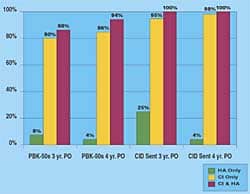
|
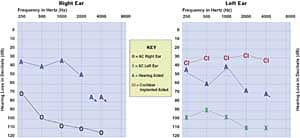
|
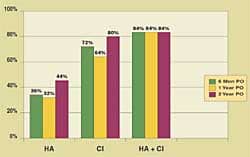
|
|
|
||||
Correspondence can be addressed to HR or Ali Andalibi, PhD, Leslie & Susan Gonda Dept. of Cell and Molecular Biology, House Ear Institute, 2100 W. Third St., Los Angeles, CA 90057; email: [email protected].
References
1. Lim DJ, Chun YM, Lee HY, Moon SK, Chang KH, Li J & Andalibi A: Cell biology of tubotympanum in relation to pathogenesis of otitis media—a review. Vaccine 2000; 19, Suppl 1: S17-S25.
2. Shtuo T, Xu H, Wang B, Han J, Kai H, Gu XX, Murphy TF, Lim DJ & Li JD: Activation of NF-kB by nontypeable Hemophilus influenzae is mediated by toll-like receptor 2-TAK1-dependent NIK-IKKa/ß-KkBa and MKK3/6-p38 MAP kinase signaling pathways in epithelial cells. Proc Nat Acad Sci USA 2001; 98 (15): 8774-8779.
3. Lim DJ, Liu YS & Birck H: Secretory lysozyme of the human middle ear mucosa: immunocytochemical localization. Ann Otol Rhinol Laryngol 1976; 85(1 Pt 1): 50-60.
4. Lehrer RI & Ganz T: Antimicrobial peptides in mammalian and insect host defense. Curr Opin Immunol 1999; 11: 23-27.
5. Ganz T & Lehrer RI: Defensins. Pharmacol Ther 1995; 66: 191-205.
6. Vorland LH, Ulvatne H, Andersen J, Haukland H, Rekdal O, Svendsen JS & Gutteberg TJ: Lactoferricin of bovine origin is more active than lactoferricins of human, murine and caprine origin. Scand J Infect Dis 1998; 30(5): 513-7.
7. Qiu J, Hendrixson DR, Baker EN, Murphy TF, St Geme JW 3rd & Plaut AG: Human milk lactoferrin inactivates two putative colonization factors expressed by Haemophilus influenzae. Proc Natl Acad Sci USA 1998; 95(21): 12641-6.




